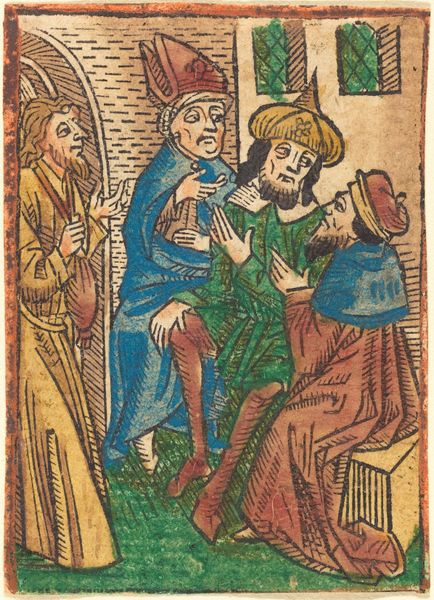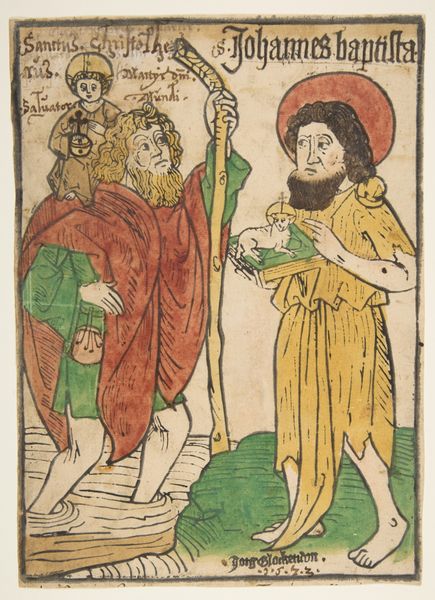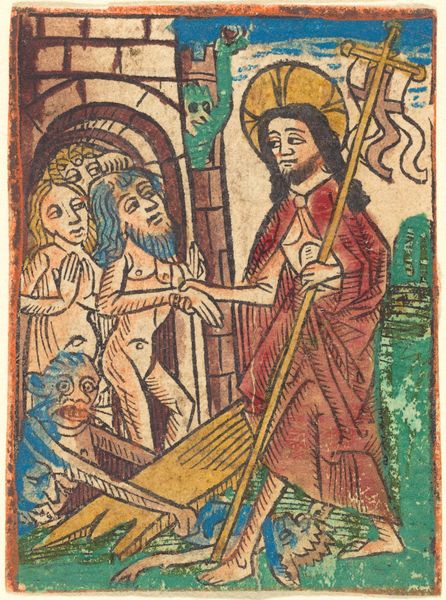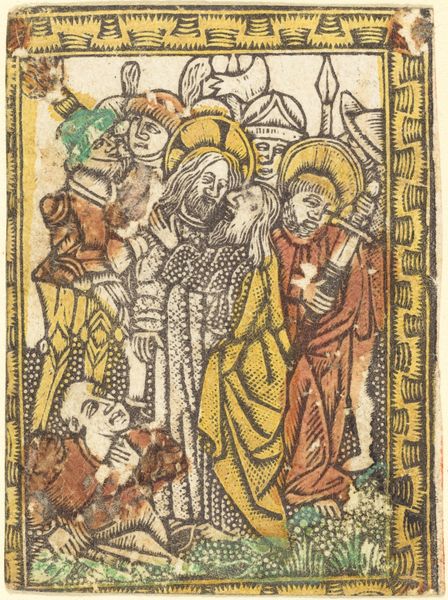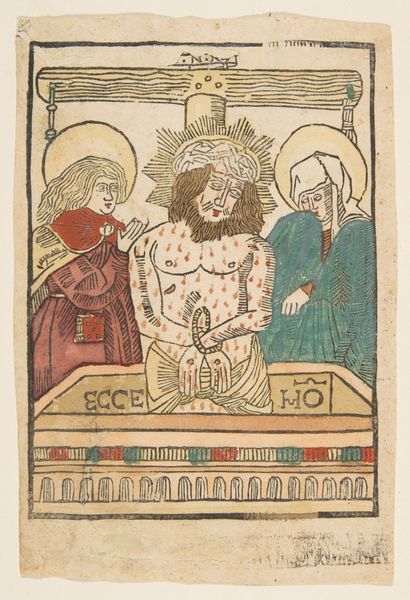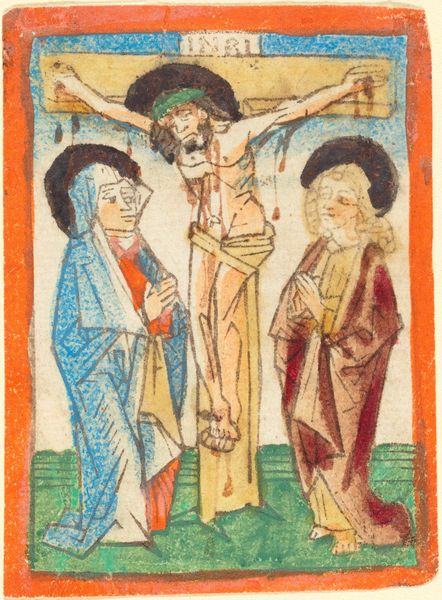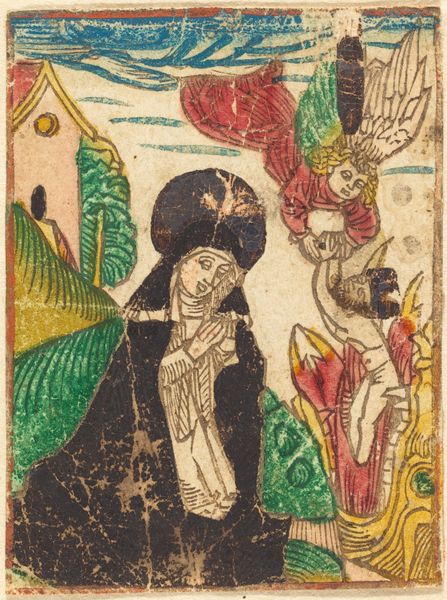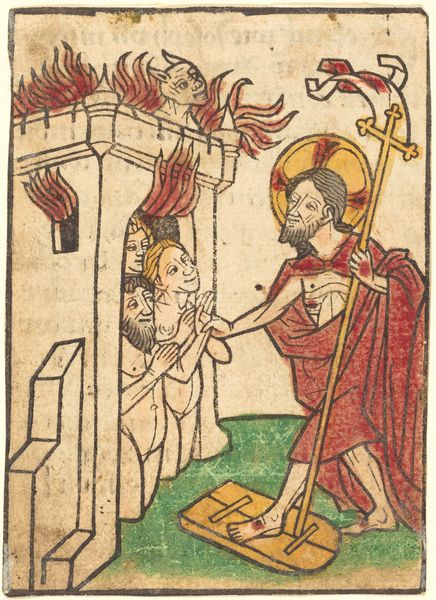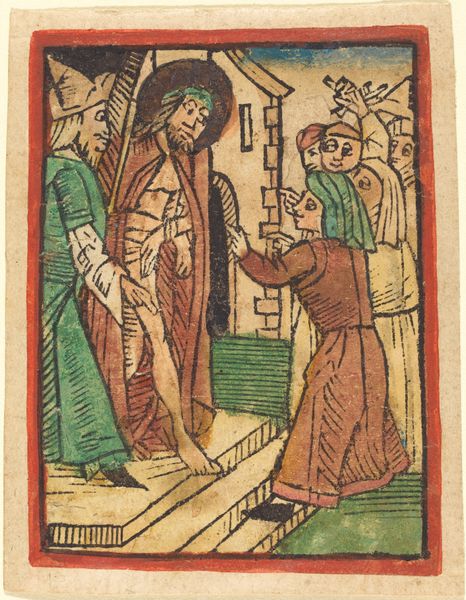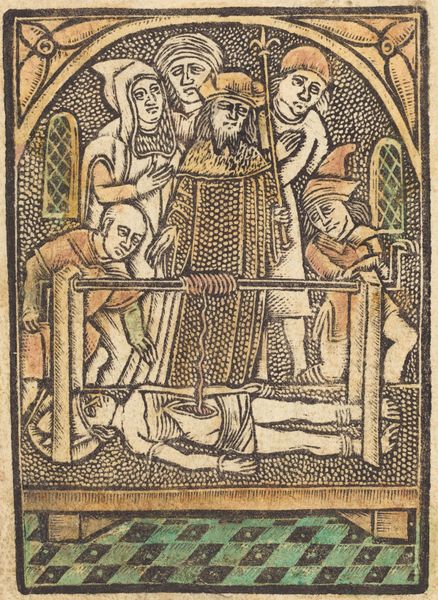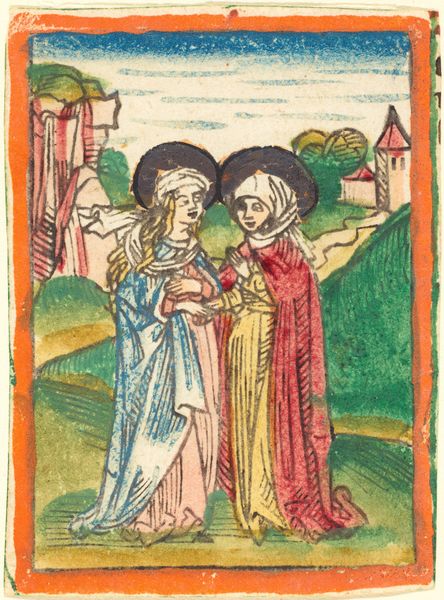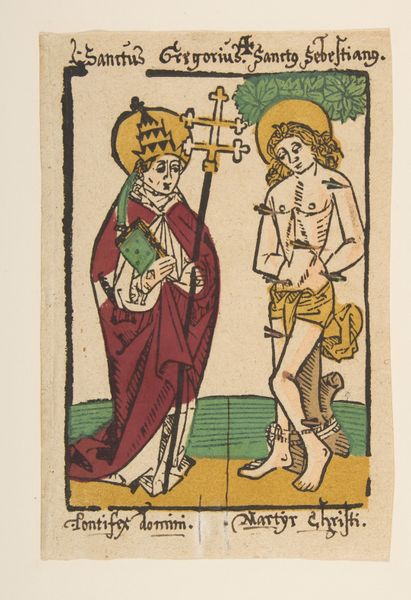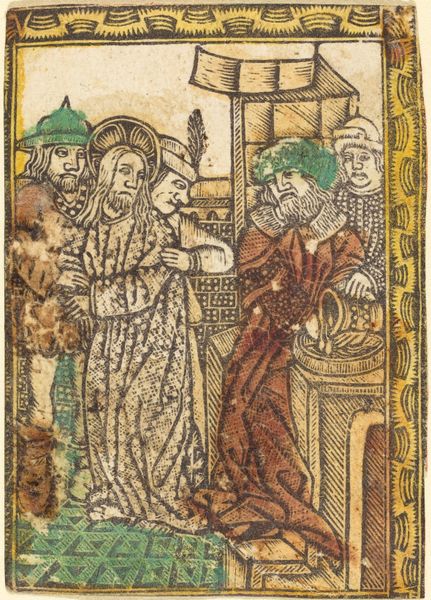
print, woodcut, engraving
#
narrative-art
# print
#
figuration
#
coloured pencil
#
woodcut
#
northern-renaissance
#
engraving
Copyright: National Gallery of Art: CC0 1.0
Editor: We're looking at "Christ Appearing to Mary Magdalene," a woodcut and engraving that dates back to around 1500 by an anonymous artist. I’m immediately struck by the raw emotion captured despite the relative simplicity of the printmaking medium. What's your read on this scene? Curator: It hums with a unique kind of devotional intensity, doesn't it? It feels almost theatrical, the way Christ’s figure looms against the detailed, dreamlike landscape. And yet, something’s a bit… off-kilter, wouldn’t you say? There’s a Northern Renaissance interest in detail, yet also something almost naive about the perspective. Does the print give you any particular feelings about the narrative, how would you interpret this scene? Editor: Absolutely! It's like two separate realities coexisting. The stiff posture of Christ versus the tenderness implied in Mary Magdalene’s offering…It creates a push and pull. And it's that almost awkward juxtaposition, a very visceral reaction, which stays with you, right? Curator: Precisely. Remember, woodcuts at this time were often hand-colored, intended for mass consumption. It’s about making a direct, emotional impact. It captures the core message and personal grief, rather than the perfection of anatomy. The engraving details draw your eye around the artwork, while the figures provide an immediacy – almost like we're right there. Editor: This piece reminds me that visual storytelling doesn't always need perfect realism to be impactful. Curator: Exactly. It's about emotion, belief, and a unique kind of creative expression. That's what art offers - a way to transcend pure representation. It’s rather thought-provoking, really.
Comments
No comments
Be the first to comment and join the conversation on the ultimate creative platform.
